THE ROAD FROM HUACHO TO HUARAZ took five hours, had hundreds of hairpin turns and climbed 13,000 feet into the Andean Cordillera Blanca before descending to the sprawl that is Huaraz. Our suite at Villa Valencia was another gem, the equal of many of our AirBnBs but at a fraction of the cost. The downside, no heat and little oxygen an elevation of 10,000 feet—a bit of a challenge but heavy wool blankets helped.
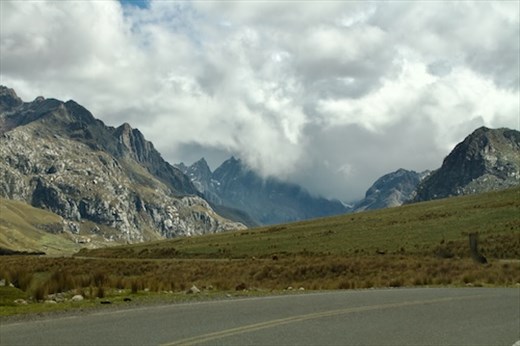
The Road to Huaraz
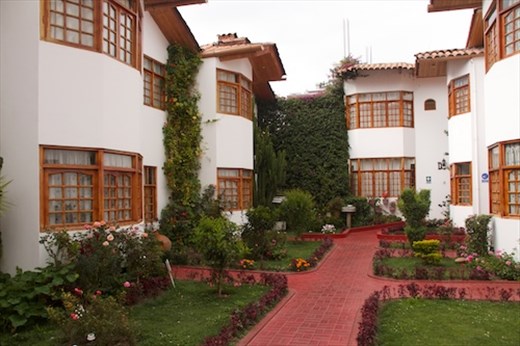
Villa Vallencia, another Gem
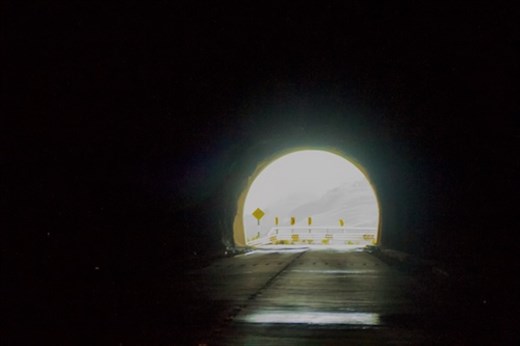
Light at the end of the Tunnel, 14,330 feet above sea level
We still had another hundred kilometers to drive on Friday to Chavín de Hauntar—two and a half hours of winding road with rock-falls, washed out sections and a dark tunnel at 14,330 feet above sea level. That’s higher than Colorado’s Pike’s Peak! Pity the ancient ones who traveled this route on foot when Chavïn was one of the most sacred pilgrimage sites in the Andes.
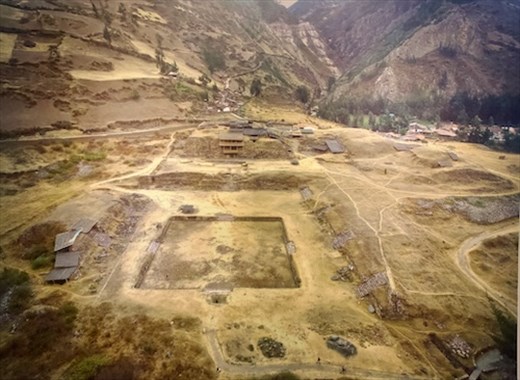
Drone's View of Chavín de Hauntar (Chavín Musuem photo)
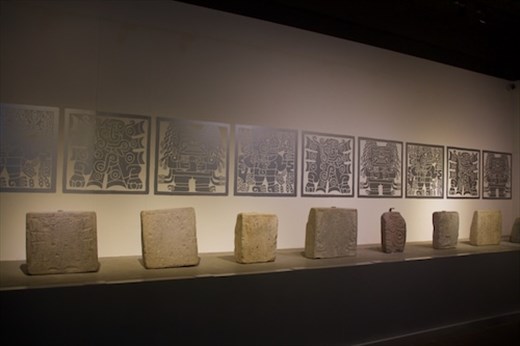
Carved tombstones, Chavín Museum
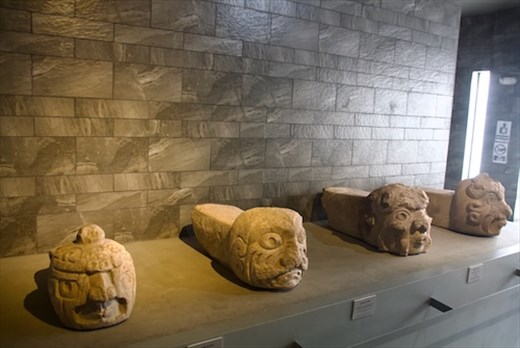
"Tenon Heads" from Chavín Temple wall
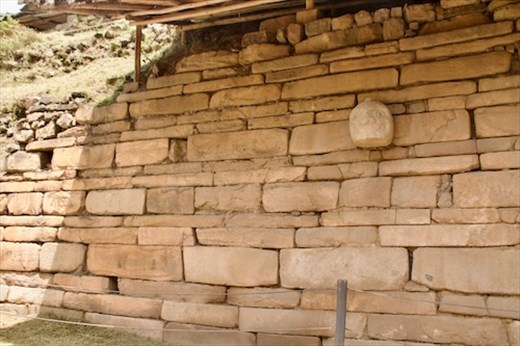
Only one "Tenon Head" remains in situ
It was raining when we finally arrived in Chavín so we decided to start with the Museum. Everything was in Spanish but we more or less figured out the story of Chavín from the photos and charts—we’ll get the rest of the history from articles on the internet. The highlights of the museum were the Lapida tombstone carvings and the collection of “tenon heads” that once adorned the exterior walls. Three heads still have the tenon that was inserted into a hole in the wall while another, we later saw, is still in situ in the wall of the complex.
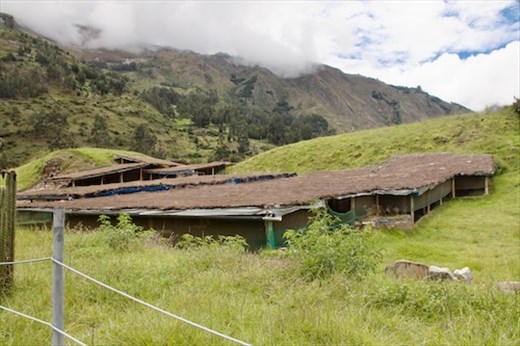
Chavín de Hauntar isn't impressive at first
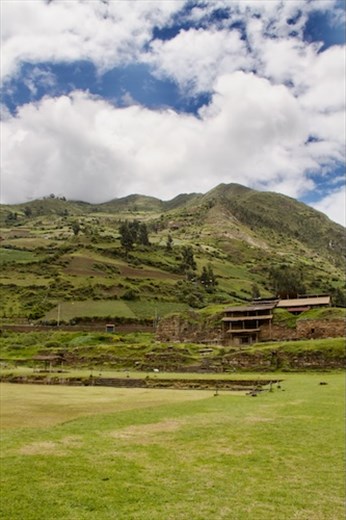
Plaza Meyor and Main Temple
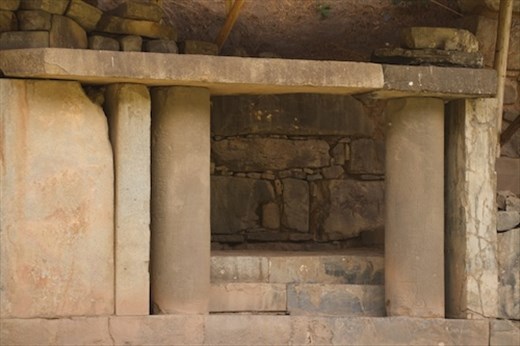
Gate into Main Temple
The Chavín culture flourished between 900 and 200 BCE when it was a major pilgrimage site where people traveled to consult the oracle and for spiritual rituals. Chavín itself isn’t impressive—in fact we drove right past it on our way into town without realizing it. There are no towering pyramids, formidable walls or even protective tarps covering the site. The carvings of men transforming into jaguars and such are nearly inscrutable and hard to see. Chavín’s allure is underground inside the gallery, a labyrinth of dark stone passageways. It is thought that participants in the ceremonies would snort hallucinogenic drugs before following the priests into the underground labyrinth. Amidst bellowing conch horns they would be led to the primal god Lanzón.
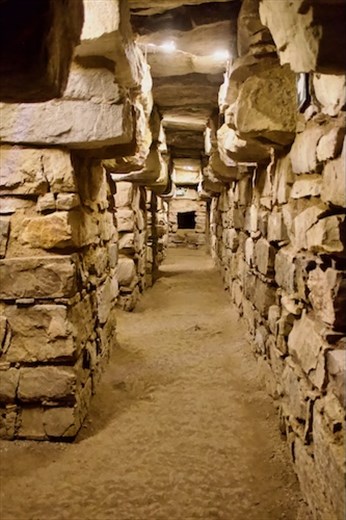
Inside the Gallery
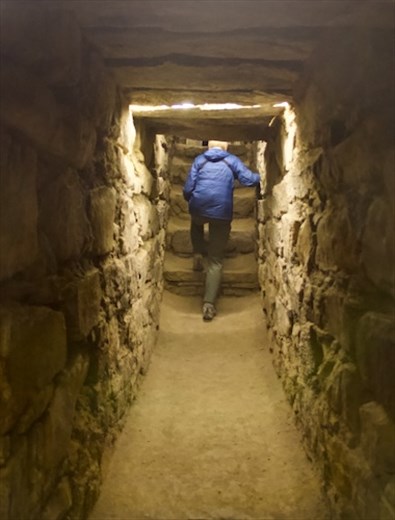
Connie keeping a low profile in the Gallery
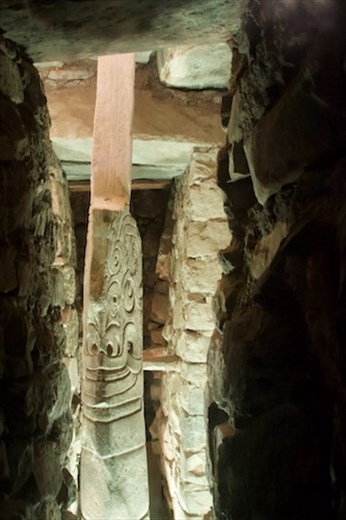
Lanzón Obelisk
Sober as judges, we carefully descended the steep stairway into the tunnels, turning here and there down dead ends until we finally encountered Lanzón himself, protected behind plexiglass. With the drugs and horns and what-not this certainly would have put the fear of god into anyone. A bit farther on I heard a flute playing softly—a nice touch, I thought. It wasn’t piped-in mood music but three or four (I couldn’t count them before they waved us on) people sitting on the floor lost in prayer. And high as kites, I imagine.
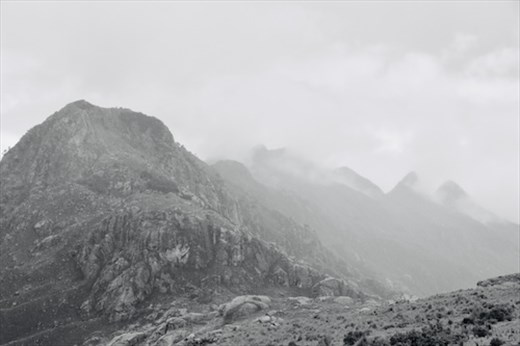
Andean Storm's a-comin'

New snow on 20,900 foot Moutn Hauntsán
The drive home in the rain was equally adventurous with slick roads, new rockfalls and steep downs where our tiny car had struggled up a few hours earlier. In the morning we realized that the rain had been snow on 20,900-foot Mount Huantsán and the other peaks in Cordillera Blanca. And this is the middle of Summer!